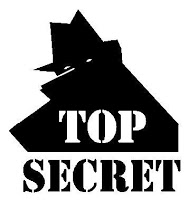Bob Aldemann
New American
Last July the Washington Post published a three-part story on “the huge security buildup in the United States after the Sept. 11, 2001 attacks.” This week, the Post published “Monitoring America,” the fourth installment of its “Top Secret America” series, describing security efforts at the local level.
After two years of research, hundreds of interviews, and thousands of hours poring over documents, the Washington Post investigation was unable to determine anything for sure — except, of course, that the security system is massive:
The top-secret world the government created in response to the terrorist attacks of September 11, 2001 has become so large, so unwieldy and so secretive that no one knows how much money it costs, how many people it employs, how many programs exist within it or exactly how many agencies do the same work….
After nine years of unprecedented spending and growth, the result is [that] the system put in place to keep the United States safe is so massive that its effectiveness is impossible to determine.
The system now spreads over more than 10,000 locations, employs an estimated 1 million people, and involves 1,300 government organizations and almost 2,000 private companies. And yet, it was virtually helpless in the face of the Fort Hood shooter or the Christmas Day bomber, both of whom had left tracks that had gotten buried under volumes and reams of incoming and irrelevant data.
The study did reveal Top Secret America’s mind-numbingly complex operations. In a moment of candor, retired U. S. Army Lt. General John Vines, who was asked to review just part of the system, exclaimed:
I’m not aware of any agency with the authority, responsibility or a process in place to coordinate all these interagency and commercial activities. The complexity of this system defies description.
And the growth of the agencies tasked with keeping the country safe (the mission defined as “defeating transnational violent extremists”) is astonishing. The Pentagon’s Defense Intelligence Agency has more than doubled since 2002, the National Security Agency has doubled in size, and the number of FBI Joint Terrorism Task Forces jumped from 35 to 106. The researchers could provide only rough estimates of the cost of the operation: $40 billion was committed by Congress nine days after the attacks, followed by an additional $36 billion in 2002, $44 billion in 2003 — “and that was only a beginning.” The number of agencies involved in “Top Secret America” (TSA) grew from 24 at the end of 2001, with 37 more being added in 2002, 36 new ones in 2003, and successively larger additions in the following years, for a total, so far, of 263 organizations created in the wake of the attacks. After reviewing the Washington Post’s findings last July, retired Admiral Dennis Blair succinctly summed up the effort: “After 9/11, when we decided to attack violent extremism, we did as we so often do in this country: the attitude was, if it’s worth doing, it’s probably worth overdoing.”


Be the first to comment on "Top Secret America: Expensive, Chaotic and Dangerous"